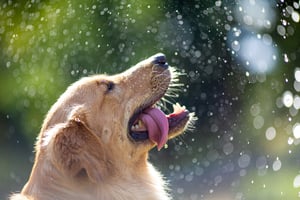Having a cat with crystals in their bladder is a common issue. It can be painful and uncomfortable...
When Your Cat's Paw is Swollen and Limping: Causes and Treatment
Cats can suffer from swollen and limping paws due to various ailments. It is important to identify the cause and provide the appropriate treatment to ensure your cat's comfort and well-being. This article will provide information on the causes of swollen and limping paws in cats and discuss the various treatment options available.
Causes of Swollen and Limping Paws in Cats
There are several potential causes of swollen and limping paws in cats. These can include:
- Injuries: Cats can easily injure their paws when walking or running, especially if they are running on sharp objects or surfaces. Injuries can range from minor cuts or scrapes to more serious lacerations or fractures. In such cases, the cat's paw may be swollen and the cat may be limping.
- Infections: Cats can also develop infections in their paws which can cause swelling and limping. These infections can be caused by bacteria, viruses, fungi, or parasites. Common causes of infections in cats' paws include fungal infections, bacterial infections, and parasites such as fleas or ticks.
- Allergies: Cats can also suffer from allergic reactions which can cause swelling and limping. Common allergens that can cause allergic reactions in cats include pollen, dust, mold, and certain foods.
- Arthritis: Arthritis is a common condition in cats, especially in older cats. Arthritis can cause swelling and limping in cats' paws as the joints become inflamed and painful.
Diagnosing the Cause of Swollen and Limping Paws in Cats
If your cat's paw is swollen and limping, it is important to take them to a veterinarian for a proper diagnosis. The veterinarian will perform a physical examination and may also order tests such as x-rays or bloodwork to determine the cause of the swelling and limping. Once the cause has been determined, the veterinarian will be able to recommend the appropriate treatment.
Treatment of Swollen and Limping Paws in Cats
The treatment for swollen and limping paws in cats will depend on the cause. If the cause is an injury, the veterinarian may recommend rest, ice, and elevation to reduce the swelling and pain. If the cause is an infection, the veterinarian may prescribe antibiotics or antifungal medications. For allergies, the veterinarian may recommend anti-allergy medications or a change in the cat's diet. For arthritis, the veterinarian may prescribe anti-inflammatory medications or recommend supplements such as glucosamine and chondroitin.
Preventing Swollen and Limping Paws in Cats
There are several steps you can take to help prevent your cat from developing swollen and limping paws. These include:
- Keep your cat's nails trimmed: Long nails can cause injury to your cat's paws, so it is important to keep them trimmed. Trimming your cat's nails regularly can also help reduce the risk of infection.
- Provide a soft and comfortable bed: Providing a comfortable bed for your cat can help reduce the risk of injury to their paws. It is important to choose a bed that is soft and supportive.
- Keep your cat away from potential allergens: Keeping your cat away from potential allergens such as pollen, dust, and mold can help reduce the risk of allergic reactions. It is also important to feed your cat a high-quality diet to reduce the risk of food allergies.
- Provide regular exercise: Regular exercise can help reduce the risk of arthritis in cats. It is important to provide your cat with a safe environment to exercise in and to not over-exercise them.
Conclusion
Swollen and limping paws in cats can be caused by a variety of conditions, so it is important to consult a veterinarian for a proper diagnosis. Treatment will depend on the cause and may include rest, ice, elevation, medications, and supplements. It is also important to take steps to prevent swollen and limping paws in cats, such as keeping their nails trimmed, providing a comfortable bed, keeping them away from potential allergens, and providing regular exercise.



